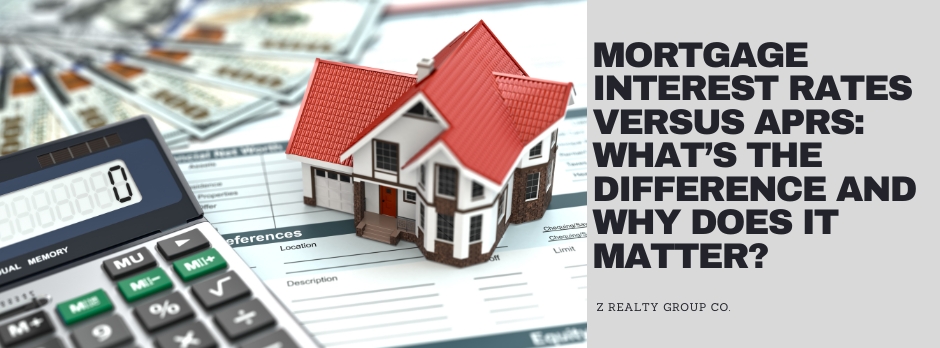 MORTGAGE INTEREST RATES VERSUS APRS: WHAT’S THE DIFFERENCE AND WHY DOES IT MATTER?
MORTGAGE INTEREST RATES VERSUS APRS: WHAT’S THE DIFFERENCE AND WHY DOES IT MATTER?
Buying a home is a significant decision that often involves securing a mortgage. As you embark on this journey, you'll likely come across two critical terms: mortgage interest rate and annual percentage rate (APR).
While these terms may seem interchangeable, it’s crucial to understand the differences between interest rates and APRs so you can make informed decisions about your home loan. Here are several vital facts to remember when shopping for a mortgage.
Mortgage interest rates
The mortgage interest rate is the financing rate a lender charges to borrow money for your home. Expressed as a percentage, it determines the interest you'll owe on top of the principal loan amount.
Several factors influence mortgage interest rates, some within your control and others beyond it. External factors, such as inflation rates, economic conditions, and global financial trends, all significantly impact the interest rates charged by lenders.
But your credit score, debt-to-income ratio, and the size of your down payment are factors you can manage. Lenders use these indicators to assess your creditworthiness and assign an interest rate accordingly. So, staying financially responsible and maintaining a good credit history can improve your odds of securing a loan with a more favorable interest rate.
Annual percentage rates (APR)
While a mortgage's interest rate is the most significant factor, it doesn't capture the total loan cost. Compared to the interest rate, the annual percentage rate (APR) provides a more comprehensive picture. This is because it also contains any additional fees charged by the lender, which may include:
- Origination fees (underwriting, application, processing, and document preparation fees)
- Mortgage discount points
- Private mortgage insurance (PMI)
- Credit report fees
- Certain closing costs
Other fees may be included, too. Each lender structures their fees differently and may use different terms to describe them. However, comparing lenders’ APRs makes it easier for borrowers to do side-by-side comparisons.
It’s also important to note that APR only includes fees charged by lenders; it does NOT incorporate other closing-related expenses charged by entities like title companies, property surveyors, attorneys, etc.
Why is it better to use the APR when shopping for and comparing loans?
Relying solely on the interest rate when comparing mortgage offers can be misleading. The APR provides a more accurate reflection of the total cost, helping you make an informed decision.
For example, a loan with a lower interest rate might have a higher APR due to substantial additional fees. By considering the APR, you can compare loans on a level playing field and avoid surprises later in the process.
Other tips to keep in mind
Understand loan terms: Different loans may have varying terms that impact your monthly payments and overall cost. In particular, recognize the differences between adjustable and fixed-rate mortgages. Adjustable-rate mortgages (ARMs) typically offer a low introductory rate that could go up later, whereas a fixed-rate mortgage only changes if you decide to refinance your mortgage.
Check for prepayment penalties: Some loans impose penalties for paying off the mortgage early. Be aware of these terms and choose a loan that aligns with your long-term goals.
Get multiple quotes: Don't settle for the first offer you receive. Shop around and obtain quotes from various lenders to find the most favorable terms.
Navigating the world of mortgages requires a nuanced understanding of interest rates, APR, and other mortgage-related factors. If you work with an agent who has earned the Accredited Buyer’s Representative (ABR®) designation, you’ll have someone who can answer your questions and point you to trusted lenders in your area that other buyers have used.
